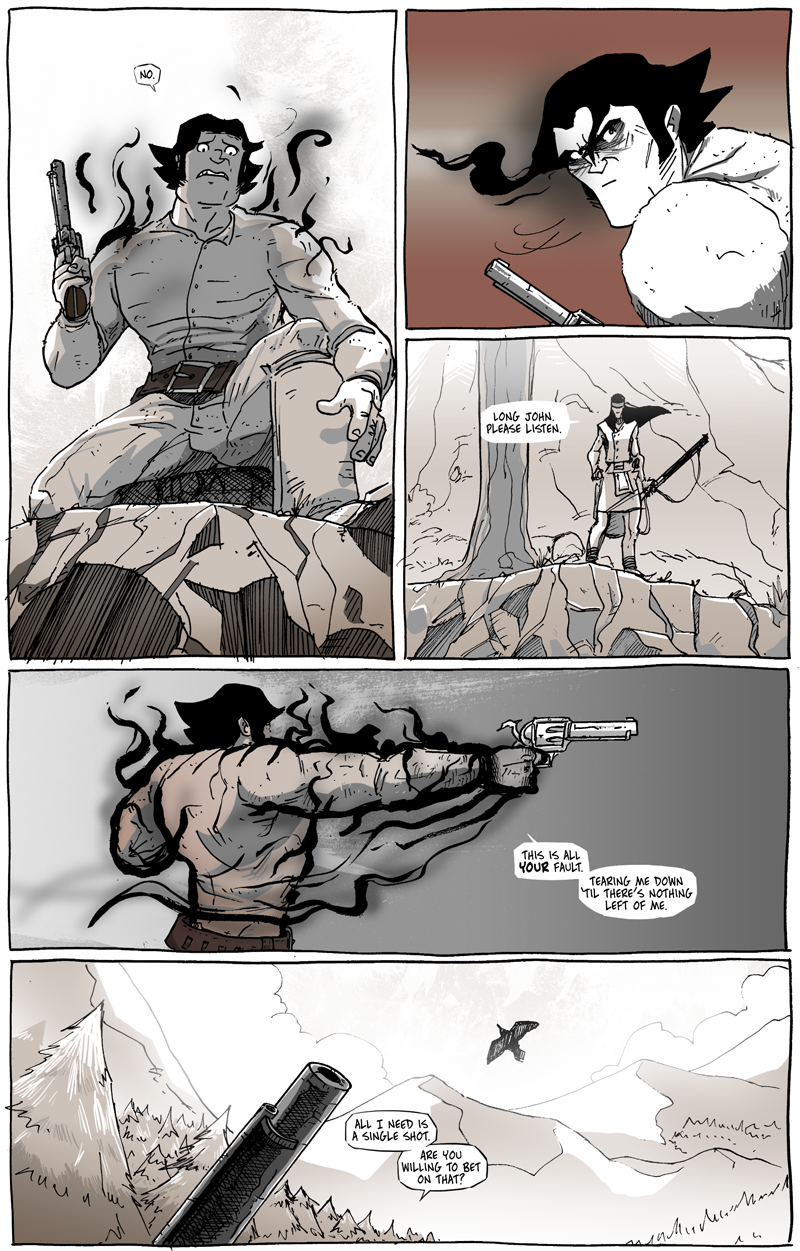At Odds
One thing I’m really proud of (a thing I’m sure some of the potential audience resents) of having done in these first two chapters has been to recalibrate the symbol of the gun as it pertains to the western genre. Westerns are known for their incredible shoot-outs were guns are blazing and missing and hitting in a rather small space. What the traditional western does is, for lack of a better word, fetishize the gun and make the threat the bullets. The gun itself is a tease, a hair-trigger (sorry) that promises loud, violent action that you expect.
So far, only two bullets have been fired in Long John (more on that in a few pages), but it hasn’t been absent of guns. What I hope a page like today’s does is make the gun itself the threatening presence. If a gun is pulled, that is the violent act, not the bullets that spew from it; that’s just a consequence, it’s physics.
This doesn’t come from any agenda I have secreted away behind the art and words––not at all, actually. What I hope to do is play with the expectations of the genre. What does the gun mean normally? How can I alter that? How can I get it to “feel” different, so to speak? By pulling back on the action and making every bullet count, we get these interesting, beautiful, powerful machines to mean so much more than what it usually means in westerns––a game of red light, green light, like when I hold a treat above my dog’s head and tell him to stay. He’s not actually staying, he’s vibrating with anticipation that he’s going to get a treat soon.
I want the gun to be a presence, like an enigmatic omen, and I think I’ve taken some steps to get there. Plus, they’re kind of fun to draw.



Discussion ¬